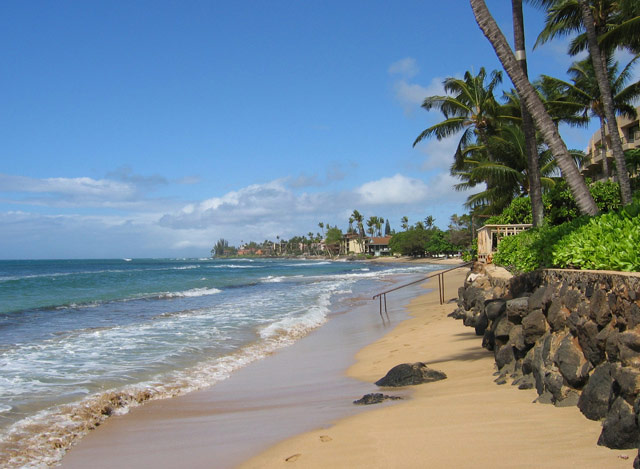Key Found to the Smell of the Sea

A trip to the beach means sand between your toes, salt water in your mouth and that aromatic sea air in your nose. But what gives the ocean air that delightful and distinctive smell? Scientists have not known the full story until now.
The smell comes from a gas produced by genes recently identified by researchers in ocean-dwelling bacteria.
Understanding how the odorous gas is produced could be important because it is implicated in cloud formation over the ocean and helps some animals find food.
Knowledge gap
Scientists had long known that bacteria could be found consuming decay products and producing a gas called dimethyl sulfide, or DMS, in places where plankton and marine plants such as seaweed were dying. This pungent gas is what gives ocean air "sort of a fishy, tangy smell," said study author Andrew Johnston of the University of East Anglia.
But while "it was known that quite a lot of bacteria could [produce DMS], no one had thought to ask how," Johnston told LiveScience.
So that's exactly what he and his colleagues set out to do.
Sign up for the Live Science daily newsletter now
Get the world’s most fascinating discoveries delivered straight to your inbox.
The team took samples of mud from the salt marshes along Britain's coast, and isolated a new strain of bacteria. After sequencing its genes and comparing the genetic structure to other known bacteria, they were able to identify the gene involved in the mechanism that converts the plants' decay products, called DMSP, into DMS.
The mechanism responsible "was absolutely not what anyone expected," Johnston said. The study's findings are detailed in the Feb. 2 issue of the journal Science.
Unexpected twist
Scientists had thought that a simple enzyme would be used to break down the DMSP into DMS, but the process turned out to be more complicated as the DMSP proved tougher to breakdown than suspected.
As with many other processes, the bacteria are cleverly conservative: the mechanism stays off until decaying plankton are around. But when a plankton bloom in the ocean is, for example, killed off by a viral attack, the bacteria rush in to reap the benefit.
"The bacteria will only switch on the genes to break down DMSP if the DMSP is around," Johnston said.
Johnston and his team were also able to clone the gene and transfer it to bacteria that lacked it, including E. coli, giving the bacteria the ability to produce DMS gas.
This mechanism is neither the only way, nor the primary way, that bacteria break down the estimated 1 billion tons of DMSP in the ocean, Johnston said, but it is important nonetheless as DMS releases over the open ocean influences cloud formation, which can influence Earth's climate.
Some seabirds rely on DMS as a homing scent to find food. On one occasion during their field research, Johnston and his team opened a bottle filled with the DMS-producing bacteria only to be bombarded by hungry seabirds.
- Coins Don't Smell, You Do
- Top Ten Unexplained Phenomena
- Bacteria & Fungi Ride Dust Across Oceans
- New Diagnosis of Ocean Health
- Images: Underwater Explorers
- Images: Freaky Fish

Andrea Thompson is an associate editor at Scientific American, where she covers sustainability, energy and the environment. Prior to that, she was a senior writer covering climate science at Climate Central and a reporter and editor at Live Science, where she primarily covered Earth science and the environment. She holds a graduate degree in science health and environmental reporting from New York University, as well as a bachelor of science and and masters of science in atmospheric chemistry from the Georgia Institute of Technology.









